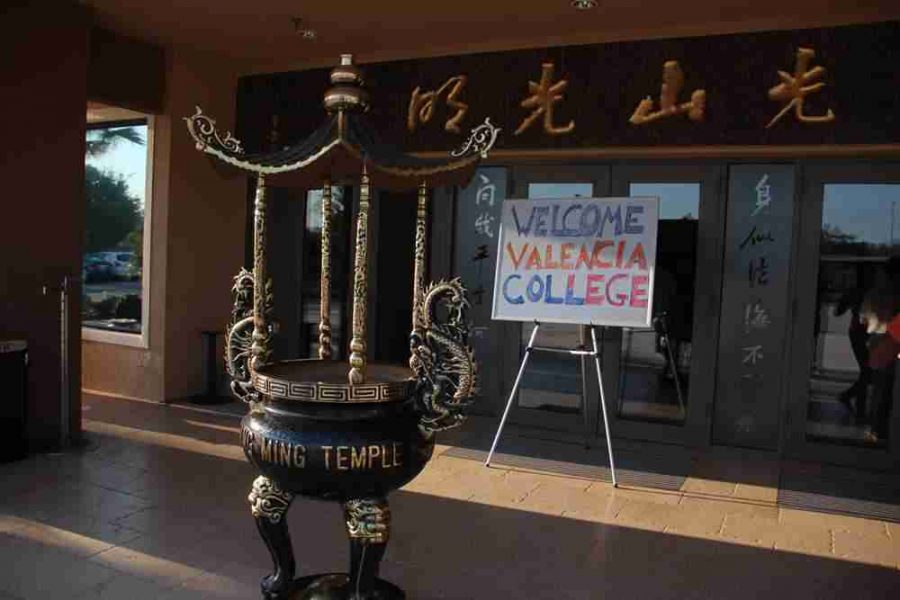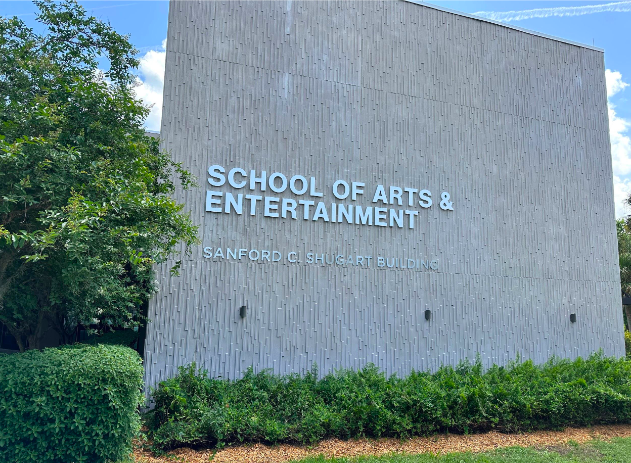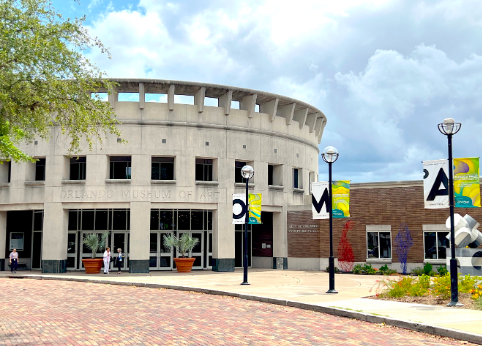ORLANDO — From the “water drop tea house” to the “lotus garden,” the Guang Ming Temple has it all in its authenticity.
Whilst the gilded sunset overtook Friday’s cloudless sky, temple staff and volunteers eagerly finished their preparations for the night of cultural enlightenment that was about to begin.
After warm greetings from the temple’s network of staff and devoted volunteers, students with the Peace and Justice Initiative filled the aisles of the main shrine for their first glimpses into the traditions of humanistic Buddhism.
Led by the temple’s director, who “worked in a university for 16 years before becoming a monastic,” students learned that “the temple was finished by volunteers in 2007” and has offered its services to the local community since 1992.
As the lights dimmed and the rhythmic voice of the temple’s director led attendees into their first meditation, Buddhism permeated the room. With the principles of education and cultural enlightenment guiding the evening, it soon became apparent that the temple guests were in for an experience.
Shortly after the meditation, students headed to the “water drop tea house” to participate in a traditional Buddhist tea ceremony, including samples of traditionally prepared black and green tea.
After completing this stop in the communal tea house, students headed to the “lotus garden” for their first look at a traditional “zen” garden, which provides the temple’s participants a place of peace in which to meditate and connect with nature.
Eventually students made their way to the memorial complex. Featuring a large Mahayana Buddha shrine, the memorial complex provides local buddhists with a place to lay the remains of their loved ones, with the hope that the guidance of the Mahayana Buddha will lead them to a peaceful rebirth in the next life.
Despite its’ ominous atmosphere, the memorial complex allowed students to gain a greater understanding of the life and death of a traditional Buddhist before heading upstairs for their first attempts at calligraphy.
Calligraphy, and ancient Chinese art form, serves as the medium for Venerable Master Hsing Yun’s wisdom to be spread throughout the 200 branches of the Fo Guang Shan monastery in Taiwan.
Laughter spread throughout the room as students attempted to recreate the ancient art form, ultimately resulting in less skilled, but entertaining, recreations.
Shortly thereafter everyone headed upstairs for a brief summary of the creation of Buddhism before joining the temple’s young adult division for a vegetarian dinner.
When asked about their experiences, Valencia student Jordan Pugsley said “Coming here was very enlightening,” directly reflecting the evenings main goal of cultural enlightenment.
With the cultural atmosphere of Valencia continually growing in its diversity, the Peace and Justice Initiative is committed to “making a difference by intentionally engaging in practices and principles that explore, advocate, and honor the dignity of self, others, and the earth.”
Events such as the Night at Guang Ming Temple directly reinforce their goals of partnering with the community to promote nonviolent conflict resolution and creating relationships between diverse groups of people in the local community.
After learning of the temples free tai chi, calligraphy and introductory buddhism classes, local Valencia student Drew Deitrich said “I would absolutely come back.”
If you too would like to participate in the free services offered by the Guang Ming Temple, or simply get involved with the Peace and Justice Initiative, visit www.orlandobuddhism.org for more information or http://valenciacollege.edu/PJI/ to find out more about the Peace and Justive Initiative.







